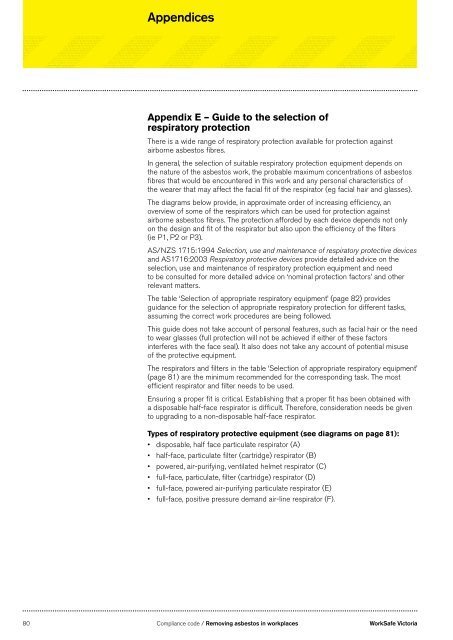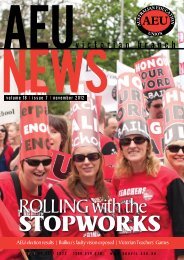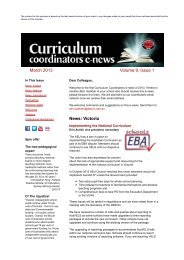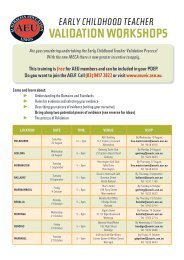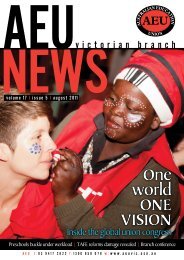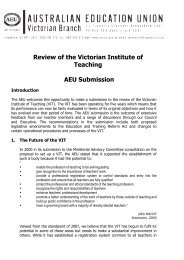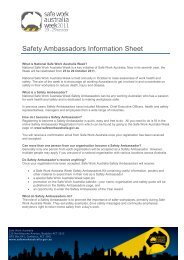Removing asbestos in workplaces - Compliance ... - WorkSafe Victoria
Removing asbestos in workplaces - Compliance ... - WorkSafe Victoria
Removing asbestos in workplaces - Compliance ... - WorkSafe Victoria
Create successful ePaper yourself
Turn your PDF publications into a flip-book with our unique Google optimized e-Paper software.
AppendicesAppendix E – Guide to the selection ofrespiratory protectionThere is a wide range of respiratory protection available for protection aga<strong>in</strong>stairborne <strong>asbestos</strong> fibres.In general, the selection of suitable respiratory protection equipment depends onthe nature of the <strong>asbestos</strong> work, the probable maximum concentrations of <strong>asbestos</strong>fibres that would be encountered <strong>in</strong> this work and any personal characteristics ofthe wearer that may affect the facial fit of the respirator (eg facial hair and glasses).The diagrams below provide, <strong>in</strong> approximate order of <strong>in</strong>creas<strong>in</strong>g efficiency, anoverview of some of the respirators which can be used for protection aga<strong>in</strong>stairborne <strong>asbestos</strong> fibres. The protection afforded by each device depends not onlyon the design and fit of the respirator but also upon the efficiency of the filters(ie P1, P2 or P3).AS/NZS 1715:1994 Selection, use and ma<strong>in</strong>tenance of respiratory protective devicesand AS1716:2003 Respiratory protective devices provide detailed advice on theselection, use and ma<strong>in</strong>tenance of respiratory protection equipment and needto be consulted for more detailed advice on ‘nom<strong>in</strong>al protection factors’ and otherrelevant matters.The table ‘Selection of appropriate respiratory equipment’ (page 82) providesguidance for the selection of appropriate respiratory protection for different tasks,assum<strong>in</strong>g the correct work procedures are be<strong>in</strong>g followed.This guide does not take account of personal features, such as facial hair or the needto wear glasses (full protection will not be achieved if either of these factors<strong>in</strong>terferes with the face seal). It also does not take any account of potential misuseof the protective equipment.The respirators and filters <strong>in</strong> the table ‘Selection of appropriate respiratory equipment’(page 81) are the m<strong>in</strong>imum recommended for the correspond<strong>in</strong>g task. The mostefficient respirator and filter needs to be used.Ensur<strong>in</strong>g a proper fit is critical. Establish<strong>in</strong>g that a proper fit has been obta<strong>in</strong>ed witha disposable half-face respirator is difficult. Therefore, consideration needs be givento upgrad<strong>in</strong>g to a non-disposable half-face respirator.Types of respiratory protective equipment (see diagrams on page 81):• disposable, half face particulate respirator (A)• half-face, particulate filter (cartridge) respirator (B)• powered, air-purify<strong>in</strong>g, ventilated helmet respirator (C)• full-face, particulate, filter (cartridge) respirator (D)• full-face, powered air-purify<strong>in</strong>g particulate respirator (E)• full-face, positive pressure demand air-l<strong>in</strong>e respirator (F).80 <strong>Compliance</strong> code / <strong>Remov<strong>in</strong>g</strong> <strong>asbestos</strong> <strong>in</strong> <strong>workplaces</strong> <strong>WorkSafe</strong> <strong>Victoria</strong>


